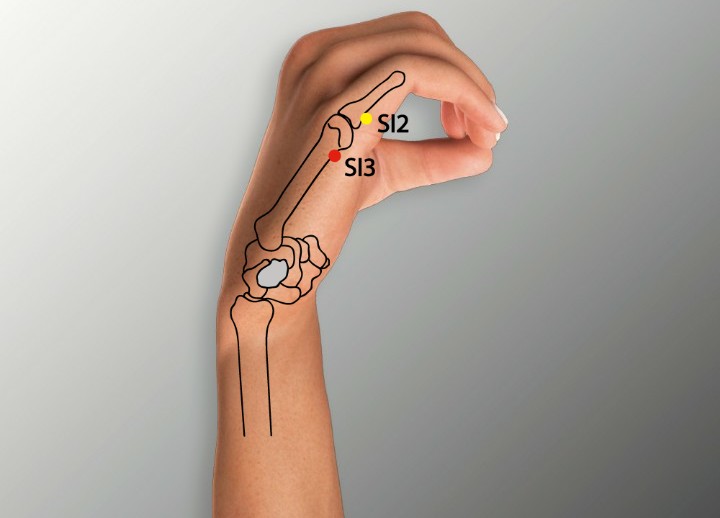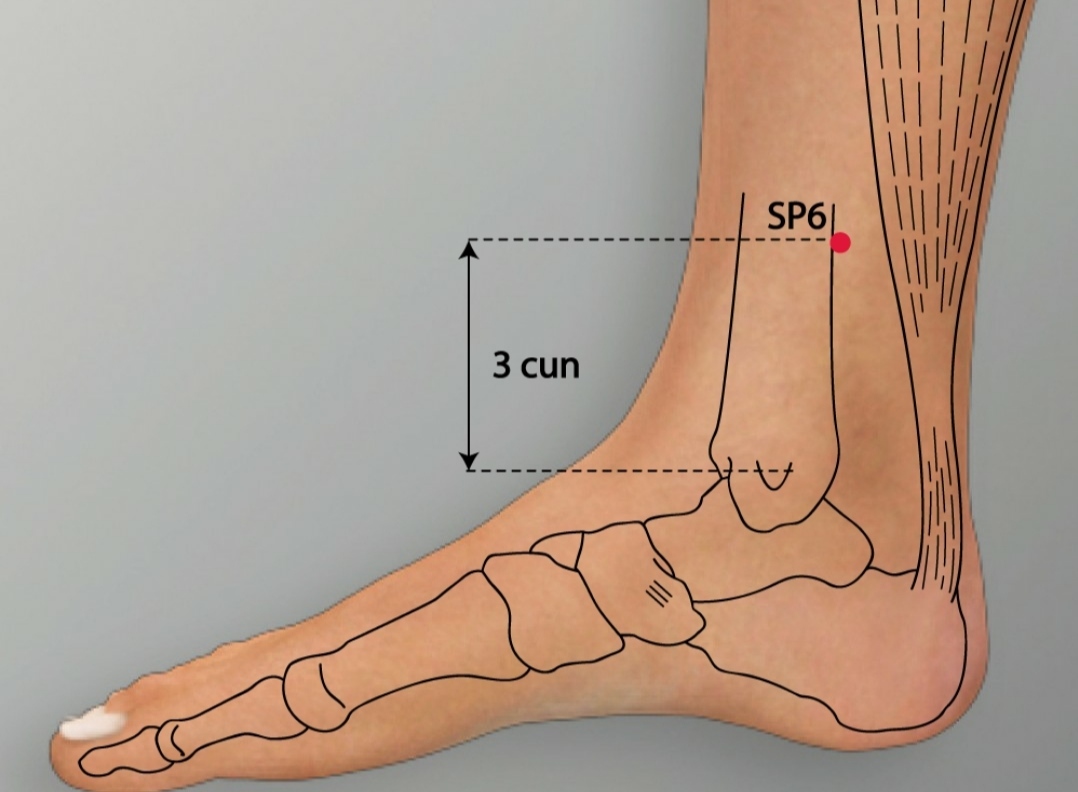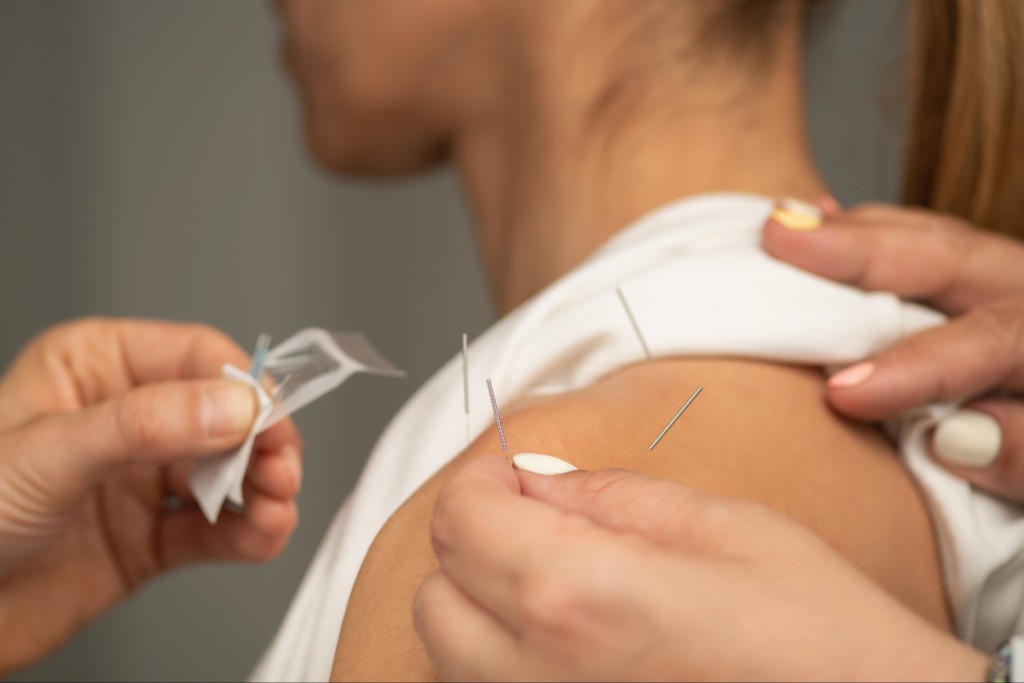Rotator Cuff Injuries and Acupuncture: A Comprehensive Guide
Rotator cuff injuries are among the most common causes of shoulder pain, affecting millions of people worldwide. These injuries, ranging from mild strains to complete tears, can significantly impact daily activities, work, and quality of life. Whether caused by repetitive motions, acute trauma, or age-related degeneration, rotator cuff issues often lead to pain, stiffness, and reduced mobility. While conventional treatments like physical therapy and surgery are well-known, acupuncture has emerged as a promising complementary therapy for managing rotator cuff pain and promoting recovery.
This article provides an in-depth exploration of rotator cuff injuries, their symptoms, and the role of acupuncture in treatment. We’ll delve into the pain characteristics, the effectiveness of acupuncture, key acupoints used in therapy, and practical tips for managing rotator cuff issues holistically.
- What is the Rotator Cuff?
- Types of Rotator Cuff Injuries
- Causes and Risk Factors
- Defining the Pain and Symptoms of Rotator Cuff Injuries
- Pain Characteristics
- Common Symptoms
- Impact on Daily Life
- When to Seek Medical Attention
- Conventional Treatments for Rotator Cuff Injuries
- Acupuncture for Rotator Cuff Injuries
- What is Acupuncture?
- Effectiveness of Acupuncture for Rotator Cuff Injuries
- How Acupuncture Works for Rotator Cuff Injuries
- Key Acupoints for Rotator Cuff Injuries
- Local Acupoints (Around the Shoulder)
- Distal Acupoints (Away from the Shoulder)
- General Acupoints for Pain and Inflammation
- Acupuncture Treatment Protocol
- Safety and Considerations
- Integrating Acupuncture with Other Therapies
- Lifestyle Tips for Managing Rotator Cuff Injuries
- Conclusion
What is the Rotator Cuff?
The rotator cuff is a group of four muscles and their associated tendons that stabilize the shoulder joint and enable a wide range of arm movements. These muscles include:
Maybe You Need:
- Supraspinatus: Lifts the arm and initiates abduction.
- Infraspinatus: Rotates the arm outward and stabilizes the shoulder.
- Teres Minor: Assists with external rotation and stabilization.
- Subscapularis: Rotates the arm inward and supports shoulder stability.
The rotator cuff tendons attach these muscles to the humerus (upper arm bone) and work together to keep the humeral head securely in the shallow socket of the shoulder blade (glenoid). This complex structure allows for the shoulder’s extensive range of motion but also makes it prone to injury.

Types of Rotator Cuff Injuries
Rotator cuff injuries vary in severity and type, including:
- Tendinitis: Inflammation of the rotator cuff tendons, often due to overuse or repetitive motions.
- Tendon Tears: Partial or complete tears of the tendons, caused by acute trauma (e.g., a fall) or chronic wear.
- Impingement Syndrome: The tendons become pinched under the acromion (a bony projection of the shoulder blade), causing pain and inflammation.
- Bursitis: Inflammation of the bursa, a fluid-filled sac that cushions the rotator cuff, often accompanying tendinitis.
- Degenerative Changes: Age-related wear, such as thinning or fraying of tendons, common in older adults.
Causes and Risk Factors
Rotator cuff injuries can result from acute events or gradual degeneration. Common causes include:
- Repetitive Motions: Overhead activities like throwing, swimming, or painting stress the rotator cuff over time.
- Trauma: Falls, lifting heavy objects, or sudden arm movements can cause tears or strains.
- Aging: After age 40, tendons lose elasticity and blood supply, increasing susceptibility to injury.
- Poor Posture: Forward head posture or rounded shoulders can compress the rotator cuff.
- Occupational Factors: Jobs requiring repetitive arm movements (e.g., construction, hairdressing) heighten risk.
- Sports: Activities like tennis, baseball, or weightlifting increase stress on the shoulder.
- Genetics: A family history of shoulder issues may predispose individuals.
Defining the Pain and Symptoms of Rotator Cuff Injuries
Pain Characteristics
The pain associated with rotator cuff injuries varies depending on the type, severity, and underlying cause. Here’s a detailed breakdown:
Localized Pain:
- Location: Pain is typically felt in the shoulder, often on the front or outer side. It may radiate down the upper arm, rarely extending past the elbow.
- Type: Described as a dull ache, burning, or sharp pain, especially during movement. At rest, pain may be mild or absent in early stages.
- Aggravating Factors: Pain worsens with overhead motions (e.g., reaching, lifting), sleeping on the affected side, or activities requiring arm rotation (e.g., brushing hair, throwing).

Night Pain:
- A hallmark of rotator cuff injuries, particularly tears or severe tendinitis, is pain that disrupts sleep, especially when lying on the affected shoulder.
Referred Pain:
- Pain may spread to the upper arm or neck, particularly in cases of impingement or nerve irritation.
- Unlike radicular pain from spinal issues, rotator cuff pain rarely causes numbness or tingling unless nerve compression is involved.
Acute vs. Chronic Pain:
- Acute: Sudden onset due to trauma, characterized by sharp, intense pain.
- Chronic: Gradual onset from overuse or degeneration, marked by persistent aching or stiffness.
Common Symptoms
Beyond pain, rotator cuff injuries present a range of symptoms:
- Weakness: Difficulty lifting or rotating the arm, especially with tasks like reaching overhead or behind the back.
- Stiffness: Reduced range of motion, making it hard to perform daily activities like dressing or combing hair.
- Crepitus: A clicking, popping, or grinding sensation during shoulder movement, often due to inflammation or tendon damage.
- Swelling or Tenderness: The shoulder may feel tender to the touch or appear swollen in cases of bursitis or tendinitis.
- Loss of Function: In severe cases (e.g., full-thickness tears), patients may be unable to lift the arm without assistance.
- Compensatory Movements: Patients may alter their posture or movement patterns, leading to secondary pain in the neck or back.
Impact on Daily Life
Rotator cuff injuries can profoundly affect quality of life. Simple tasks like putting on a jacket, driving, or carrying groceries may become painful or impossible. Chronic pain can lead to fatigue, reduced productivity, and emotional distress, including anxiety or depression. In severe cases, untreated injuries may result in permanent loss of shoulder function or frozen shoulder (adhesive capsulitis).
When to Seek Medical Attention
While mild symptoms may improve with rest and conservative care, certain signs require prompt medical evaluation:
- Sudden inability to move the arm after trauma.
- Severe pain that persists despite rest or medication.
- Progressive weakness or loss of shoulder function.
- Signs of infection (e.g., fever, redness, warmth) if surgery or injections were recently performed.
Conventional Treatments for Rotator Cuff Injuries
Standard treatments for rotator cuff injuries aim to reduce pain, restore function, and prevent further damage:
- Rest and Activity Modification: Avoiding aggravating movements and using a sling for acute injuries.
- Medications: Nonsteroidal anti-inflammatory drugs (NSAIDs) like ibuprofen or acetaminophen for pain and inflammation.
- Physical Therapy: Exercises to strengthen rotator cuff muscles, improve flexibility, and restore range of motion.
- Corticosteroid Injections: To reduce inflammation and pain, particularly in cases of impingement or tendinitis.
- Surgery: For severe tears or cases unresponsive to conservative treatment, options include arthroscopic repair, open surgery, or shoulder replacement.
- Regenerative Therapies: Platelet-rich plasma (PRP) or stem cell injections are emerging but require further research.
While these treatments are effective for many, some patients seek complementary therapies like acupuncture to manage pain and enhance recovery without relying solely on medications or invasive procedures.

Acupuncture for Rotator Cuff Injuries
What is Acupuncture?
Acupuncture, a cornerstone of Traditional Oriental Medicine (TOM), involves inserting thin, sterile needles into specific points on the body, known as acupoints, to restore the flow of energy through meridians. In TOM, pain and dysfunction result from blockages or imbalances in energy. Acupuncture aims to alleviate these issues, addressing both symptoms and underlying causes.
For rotator cuff injuries, acupuncture targets pain relief, inflammation reduction, muscle relaxation, and improved circulation to the shoulder. It is often used alongside physical therapy or other treatments for a comprehensive approach.
Effectiveness of Acupuncture for Rotator Cuff Injuries
Research on acupuncture for shoulder pain, including rotator cuff injuries, suggests it can be an effective complementary therapy. Here’s a summary of the evidence:
Pain Reduction:
A 2018 study in The Journal of Alternative and Complementary Medicine found that acupuncture significantly reduced shoulder pain and improved function in patients with rotator cuff tendinitis.
A 2020 systematic review in Pain Medicine concluded that acupuncture was effective for chronic shoulder pain, with benefits comparable to or exceeding conventional treatments like NSAIDs.
Patients often report decreased pain intensity and frequency after 6–12 sessions.
Improved Range of Motion:
Acupuncture can reduce muscle tension and stiffness, enhancing shoulder mobility. A 2019 study in Acupuncture in Medicine showed improved range of motion in patients with rotator cuff impingement after acupuncture.
Inflammation and Healing:
Acupuncture may stimulate anti-inflammatory responses by increasing cytokine release and improving blood flow to the shoulder, aiding tissue repair.
A 2017 study in Evidence-Based Complementary and Alternative Medicine noted reduced inflammation markers in patients with shoulder tendinitis treated with acupuncture.
Chronic vs. Acute Injuries:
Acupuncture is particularly effective for chronic pain from tendinitis or partial tears, though it may also benefit acute injuries by reducing swelling and pain.
Electroacupuncture, where mild electrical currents are applied to needles, may enhance outcomes for chronic cases, as shown in a 2021 study in Frontiers in Medicine.

Limitations:
Individual responses vary based on injury severity, patient health, and practitioner skill.
Some studies suggest a placebo effect, though acupuncture often outperforms sham acupuncture in controlled trials.
Long-term benefits may require ongoing sessions or integration with other therapies.
Acupuncture is considered safe and low-risk, making it an appealing option for those seeking non-invasive pain management or those who cannot tolerate medications.
How Acupuncture Works for Rotator Cuff Injuries
Acupuncture’s mechanisms for managing rotator cuff pain include:
- Endorphin Release: Needle insertion triggers the release of endorphins, reducing pain perception.
- Improved Blood Flow: Enhanced circulation delivers oxygen and nutrients to the injured shoulder, supporting healing.
- Nervous System Regulation: Acupuncture modulates pain signals in the central and peripheral nervous systems, reducing sensitivity.
- Muscle Relaxation: Targeting trigger points relieves tension in the rotator cuff and surrounding muscles (e.g., deltoid, trapezius).
- Anti-Inflammatory Effects: Acupuncture may lower pro-inflammatory markers, reducing swelling and discomfort.
Key Acupoints for Rotator Cuff Injuries
Acupoints are chosen based on the injury’s location, TOM diagnosis, and patient symptoms. Below are commonly used acupoints for rotator cuff injuries, focusing on shoulder pain and dysfunction:
Local Acupoints (Around the Shoulder)
LI15 (Jianyu):
- Location: On the shoulder, in the depression anterior and inferior to the acromion when the arm is abducted.
- Benefits: Relieves shoulder pain, stiffness, and inflammation. Improves arm mobility.
- Use: Ideal for rotator cuff tendinitis, impingement, or tears.

LI16 (Jugu):
- Location: On the upper shoulder, in the depression between the acromial end of the clavicle and the scapular spine.
- Benefits: Alleviates shoulder pain and stiffness, particularly in the upper rotator cuff.
- Use: Used for pain radiating to the upper arm or neck.
SI9 (Jianzhen):
- Location: Posterior to the shoulder, 1 cun above the posterior axillary crease when the arm is adducted.
- Benefits: Reduces shoulder pain, muscle tension, and inflammation. Supports rotator cuff healing.
- Use: Effective for posterior shoulder pain or limited rotation.
TE14 (Jianliao):
- Location: On the shoulder, in the depression posterior and inferior to the acromion when the arm is abducted.
- Benefits: Relieves pain and stiffness in the shoulder joint, especially for impingement or tendinitis.
- Use: Commonly used for rotator cuff injuries with restricted movement.

Distal Acupoints (Away from the Shoulder)
LI4 (Hegu):
- Location: On the hand, between the thumb and index finger, at the highest point of the muscle when pressed together.
- Benefits: A powerful point for pain relief in the head, neck, and shoulders. Promotes overall Energy flow.
- Use: Used to enhance pain relief and reduce inflammation.
SI3 (Houxi):
- Location: On the ulnar side of the hand, in the depression just distal to the fifth metacarpophalangeal joint when making a fist.
- Benefits: Relieves shoulder, neck, and upper back pain. Improves mobility.
- Use: Effective for rotator cuff injuries with stiffness or radiating pain.

GB34 (Yanglingquan):
- Location: On the lateral lower leg, in the depression anterior and inferior to the head of the fibula.
- Benefits: Relaxes tendons and muscles, reduces inflammation, and supports shoulder and arm health.
- Use: Used for chronic shoulder pain or tendon issues.
General Acupoints for Pain and Inflammation
ST36 (Zusanli):
- Location: On the lower leg, 3 cun below the knee, one finger-width lateral to the shinbone.
- Benefits: Boosts energy, reduces systemic inflammation, and enhances overall healing.
- Use: Included to support recovery and reduce pain.
SP6 (Sanyinjiao):
- Location: On the inner lower leg, 3 cun above the medial malleolus, just behind the tibia.
- Benefits: Balances Energy, reduces pain, and promotes relaxation.
- Use: Addresses systemic inflammation or stress-related symptoms.

Acupuncture Treatment Protocol
- Session Frequency: 1–2 sessions per week for 6–12 weeks, depending on injury severity. Maintenance sessions may follow for chronic conditions.
- Duration: Sessions last 20–40 minutes, with needles retained for 15–30 minutes.
- Techniques: Manual needle manipulation, electroacupuncture, or moxibustion (heat therapy) may be used to enhance effects.
- Customization: Acupoints are tailored to the patient’s symptoms, TOM diagnosis (e.g., Energy stagnation, blood stasis), and overall health.
Safety and Considerations
Acupuncture is generally safe when performed by a licensed practitioner using sterile, single-use needles. Key considerations include:
- Contraindications: Avoid acupuncture in cases of bleeding disorders, blood thinner use, or local infections.
- Side Effects: Mild soreness, bruising, or fatigue may occur. Serious complications (e.g., pneumothorax) are rare but possible if needles are improperly placed near the chest.
- Practitioner Qualifications: Choose a licensed acupuncturist with experience in musculoskeletal conditions.
- Expectations: Discuss treatment goals and timelines, as results vary based on injury severity.
Integrating Acupuncture with Other Therapies
For optimal outcomes, acupuncture can be combined with:
- Physical Therapy: Strengthens rotator cuff muscles and improves shoulder stability.
- Exercise: Gentle stretching and strengthening exercises, like pendulum swings or resistance band workouts, enhance recovery.
- Nutrition: Anti-inflammatory foods (e.g., omega-3s, turmeric, berries) support tissue repair.
- Posture Correction: Ergonomic adjustments and posture training reduce shoulder stress.
- Mind-Body Techniques: Meditation or yoga can reduce stress and improve pain coping.

Lifestyle Tips for Managing Rotator Cuff Injuries
- Avoid Aggravating Activities: Limit overhead motions or heavy lifting during recovery.
- Strengthen Supporting Muscles: Focus on exercises for the rotator cuff, deltoid, and upper back.
- Improve Posture: Keep shoulders back and avoid slouching to reduce impingement.
- Use Ice or Heat: Ice reduces inflammation in acute injuries; heat relaxes muscles in chronic cases.
- Sleep Positioning: Sleep on your back or unaffected side with a pillow to support the arm.
Conclusion
Rotator cuff injuries can cause significant pain and dysfunction, impacting everything from daily tasks to athletic performance. While conventional treatments like physical therapy and surgery are effective, acupuncture offers a non-invasive, complementary approach to pain relief and recovery. By targeting key acupoints, acupuncture reduces pain, inflammation, and stiffness, helping patients regain shoulder function.
If you’re dealing with a rotator cuff injury, consider consulting a licensed acupuncturist to explore this holistic therapy. Combining acupuncture with lifestyle changes and other treatments can pave the way for lasting relief and improved shoulder health.
Have you experienced a rotator cuff injury? Share your journey or learn more about acupuncture by consulting us. Stay tuned for our upcoming articles on shoulder health and holistic pain management.
Fuji Wellness:
- Address: 132-0031 Matsushima 1-chome, 21-14, Tokyo, Japan
- Chat with us: Click here
- Email: sunnyphamsensei@gmail.com





